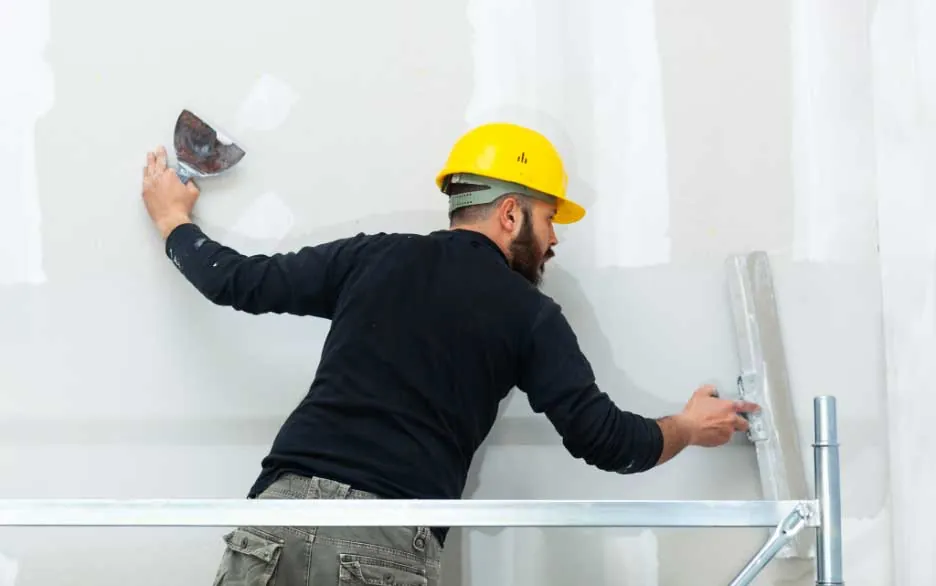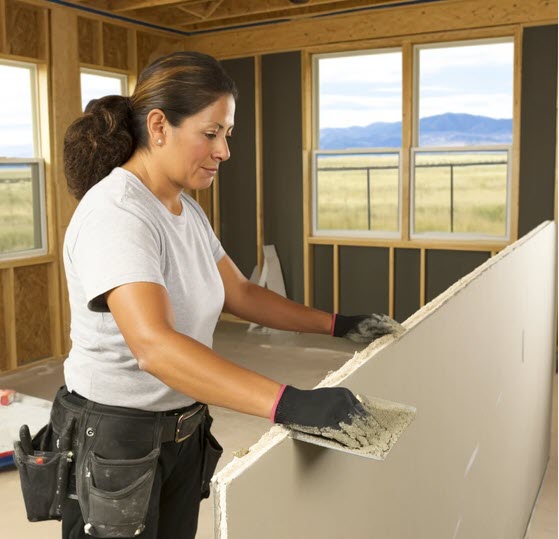Quality Drywall Installation That Changes Your Interiors
Quality Drywall Installation That Changes Your Interiors
Blog Article
Total Guide to Effective and Trustworthy Drywall Installation
Drywall installation is an important part of any kind of building or improvement job, requiring a precise technique to ensure both performance and reliability. It is necessary to explore the subtleties of each step in the procedure, as they collectively add to the total success of the drywall setup.
Crucial Tools for Drywalling
When starting a drywall setup task, having the right devices is vital for attaining an expert coating. Essential tools consist of a drywall blade, tape measure, and a T-square, which are essential for exact dimensions and smooth cuts. A drywall lift is also highly valuable, especially for ceiling setups, enabling less complicated handling of hefty panels.
For securing the drywall, a cordless drill and drywall screws are needed. The drill needs to be geared up with a drywall bit to make sure effectiveness and accuracy. In addition, a key tool is the drywall saw, which helps with cutting around electrical outlets and various other challenges.

Moreover, safety equipment such as shatterproof glass and a dirt mask are vital to guarantee personal safety and security throughout the installment process. Utilizing the right tools not just enhances the top quality of the installment however likewise enhances the process, making the job more efficient overall.
Preparing the Space

Next, analyze the condition of the ceilings and wall surfaces. Fix any type of existing damage, such as openings, fractures, or peeling off paint, to make certain a smooth and also surface for drywall application. In addition, check for electric outlets, pipes lines, and heating and cooling air ducts, marking their areas to prevent difficulties during installment.
It is likewise crucial to determine the space precisely, determining the measurements of the ceilings and wall surfaces to compute the suitable quantity of drywall required. Produce a thorough plan that includes the format and orientation of the drywall panels.
Setup Methods
Reliable installation techniques are crucial for accomplishing an expert coating in drywall projects. Proper measurement and cutting of drywall sheets are fundamental steps.
When hanging drywall, begin with the top and work downward, guaranteeing that the long edge of the board is perpendicular to the framing. Safeguard the sheets with screws as opposed to nails, which provide higher holding power and reduce the threat of standing out. Location screws every 12 inches along the edges and every 16 inches in the field of the board.
For corners, make use of edge beads to achieve sharp, tidy sides. When setting up on ceilings, use a drywall lift or have a partner aid in holding the sheets in place (drywall contractor). Preserve a void of about 1/4 inch above the flooring and ceiling to accommodate expansion and contraction
Completing Touches

Begin by using joint tape over the seams. This can be either paper or fiberglass harmonize tape, with paper being liked for its toughness. When the tape remains in location, it's time to apply the first layer of joint compound, also called Continue mud. Utilize a 10 to 12-inch taping blade to spread out the compound equally over the taped joints, feathering the edges to mix with the surrounding drywall.
Enable the compound to completely dry thoroughly, commonly 24 hr. After drying out, sand the surface gently with fine-grit sandpaper to get rid of any kind of flaws. drywall installation. Repeat the mudding and fining sand process, normally a couple of coats, making sure each layer is flush and smooth with the drywall surface
Typical Errors to Avoid
Several Do it yourself fanatics encounter challenges throughout drywall installment that can compromise the final results. One common blunder is failing to correctly determine and cut drywall sheets.
One more regular error is improper attachment. Using also couple of screws or nails can bring about loosened drywall, while overdriving bolts can create the paper to tear, damaging the framework. It's critical to keep regular spacing, typically every 16 inches, and to ensure that fasteners are flush with the surface linked here area.
In addition, not resolving wetness problems before installation can lead to mold and mildew development and architectural damages. Constantly evaluate the environment and usage moisture-resistant drywall in high-humidity locations.
Final Thought
Trusted and effective drywall setup needs thorough interest to detail throughout the procedure. By making use of necessary tools, preparing the room sufficiently, and adhering to finest practices in installment strategies, a perfect coating can be accomplished. In addition, careful application of joint compound Read Full Report and tape throughout the completing stage enhances longevity and appearance. Preventing common blunders even more adds to a professional result, emphasizing the significance of precision and strategy in successful drywall jobs.
It is crucial to explore the nuances of each step in the process, as they collectively contribute to the general success of the drywall installment.When embarking on a drywall installation project, having the right tools is important for accomplishing a specialist coating.For fastening the drywall, a cordless drill and drywall screws are required.Correctly preparing the area is necessary for an effective drywall installment.Effective setup methods are important for attaining a specialist surface in drywall jobs.
Report this page